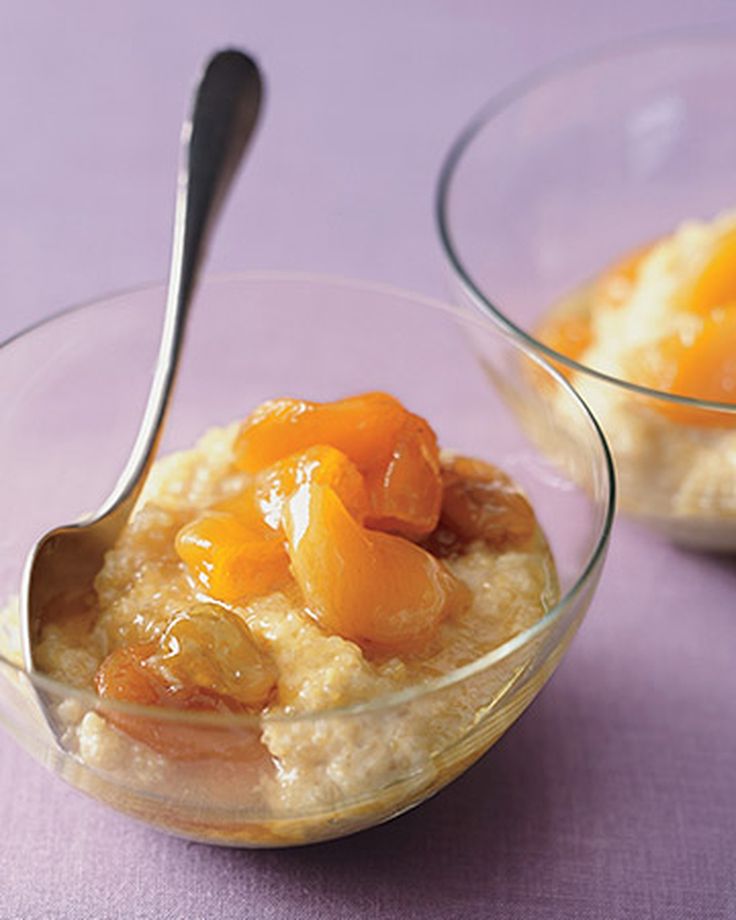Sugar snap peas baby food recipe
Snap Peas for Babies - First Foods for Baby
When can babies eat snap peas?
Sugar snap peas are challenging for new eaters because they are difficult to chew into digestible pieces. For this reason it may be best to wait to introduce them until your baby is at least 15 months old, and probably closer to 18 months of age. You can serve whole raw sugar snap peas for fun—your babies will love the crunch sound as they bite into the pod—but be sure to serve alongside other foods in case your baby is not able to actually chew the fibrous pods.
Unlike snow peas, which are flat and wide with tiny peas inside, sugar snap peas have thick pods containing slightly larger peas, which present a choking hazard. As with all pea pods, it’s important to remove the tough stringy seam that runs from tip to end before serving.
Are snap peas healthy for my baby?
Yes. Snap peas are packed with antioxidants—particularly vitamin C. They’re also a great source of iron; vitamins A, K, and B, including folate; and fiber, which can help your baby move things along when constipated.
Snap peas are high in vitamin C, which aids in absorption of non-heme iron (from plants). Try serving sugar snap peas with a high-iron plant food such as beans, broccoli, cooked leafy greens, or lentils to boost your baby’s iron levels. Iron deficiency is one of the most common nutrient deficiencies in babies between the ages of 1 and 3 and may greatly affect their growth.1 2
Are snap peas a common choking hazard for my baby?
Yes. Wait until your baby is 18 months old and has some teeth before serving whole pods. Even then, the inner peas can be a choking hazard if accidentally swallowed. To mitigate the risk, pinch the pod to smash the peas (and still serve whole) or chop up the pods.
For more information, visit our section on gagging and choking and familiarize yourself with common choking hazards.
Are snap peas a common allergen?
No, though in theory, one could be allergic to any food. If you suspect your baby is allergic to legumes, which includes beans, chickpeas, lentils, peanuts, and soy, you may want to consult an allergist before introducing sugar snap peas to be safe.
How do you prepare snap peas for babies with baby-led weaning?
Every baby develops on their own timeline, and the suggestions on how to cut or prepare particular foods are generalizations for a broad audience. Your child is an individual and may have needs or considerations beyond generally accepted practices. In determining the recommendations for size and shape of foods, we use the best available scientific information regarding gross, fine, and oral motor development to minimize choking risk. The preparation suggestions we offer are for informational purposes only and are not a substitute for child-specific, one-on-one advice from your pediatric medical or health professional or provider. It is impossible to fully eliminate all risk of a baby or child choking on any liquid, puree, or food. We advise you to follow all safety protocols we suggest to create a safe eating environment and to make educated choices for your child regarding their specific needs. Never disregard professional medical advice or delay in seeking it because of something you have read or seen here.
It is impossible to fully eliminate all risk of a baby or child choking on any liquid, puree, or food. We advise you to follow all safety protocols we suggest to create a safe eating environment and to make educated choices for your child regarding their specific needs. Never disregard professional medical advice or delay in seeking it because of something you have read or seen here.
6 to 9 months old: If you’d like to serve the whole snap pea for baby to munch and teethe on, flatten each pod with the back of a fork so the inner pea is less of a choking risk. Alternatively, finely chop and fold into other foods, such as ricotta cheese and grain salads.
9 to 12 months old: Offer chopped raw or cooked snap peas for baby to pick up with their developing pincer grasp. If you’d like to serve the whole snap pea for baby to munch and teethe on, flatten each pod with the back of a fork so the inner pea is less of a choking risk.
12 to 18 months old: Continue to offer bite-size pieces of raw or cooked snap peas.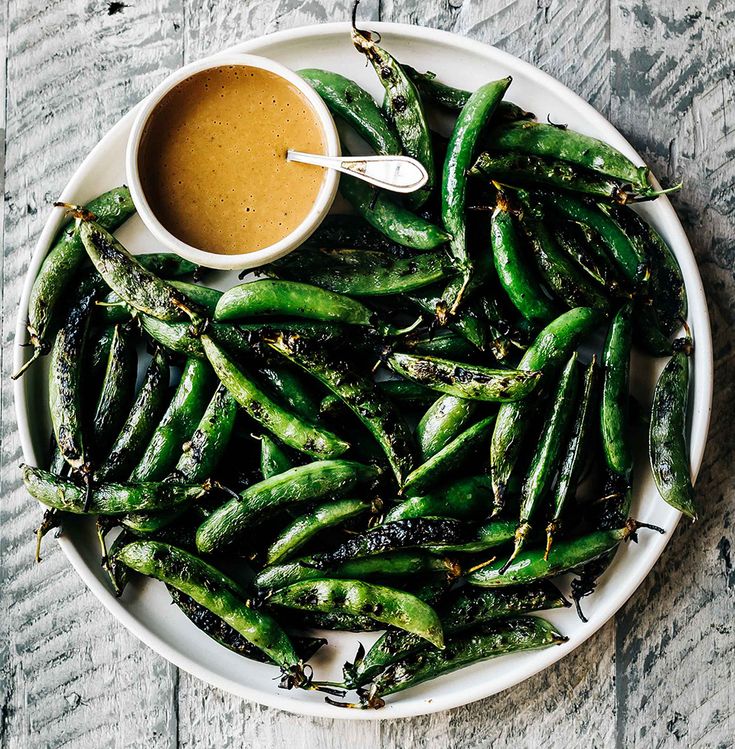 If your child is doing well with chopped pieces of snap pea and you feel comfortable with it, offer whole snap peas for biting and chewing practice under close supervision. If your child doesn’t seem ready for whole snap peas, do not worry; this is likely to come closer to 18 months of age.
If your child is doing well with chopped pieces of snap pea and you feel comfortable with it, offer whole snap peas for biting and chewing practice under close supervision. If your child doesn’t seem ready for whole snap peas, do not worry; this is likely to come closer to 18 months of age.
18 to 24 months old: Offer whole, fresh snap peas to your toddler. The crunching sounds are sure to entertain and delight! As an alternative, finely chop the pods (be sure to first remove the tough stringy seam) and mix with ricotta or yogurt to increase the amount that gets into your baby’s belly.
For more information on how to cut food for babies, visit our page on Food Sizes & Shapes.
Recipe: Snap Peas with Ricotta
Age: 6 months+
Ingredients
- Sugar snap peas
- Ricotta cheese
- Olive oil
- Lemon
Directions
- Wash the pods then remove the stringy seam from each one.
- Steam the pea pods until they’re very soft.

- Transfer the pods to a bowl, then add a splash of olive oil and a squeeze of lemon. Mix well and set aside to cool.
- While the sugar snap peas are cooling, add a heaping spoonful or two of ricotta cheese into your baby’s bowl (try a bowl that suctions to the table). Zest a bit of the lemon rind on top.
- Finely chop the cooled peas and add to your baby’s bowl with the ricotta. Serve with a pre-loaded spoon or encourage hand-scooping.
Flavor Pairings
Sugar snap peas pair well with garlic, lemon, olive oil, parmesan, and ricotta cheese, as well as proteins, like beef and chicken.
- Kazal, L. (2002) Prevention of Iron Deficiency in Infants and Toddlers. American Family Physician. DOI: 1;66(7):1217-1225.
- Baker RD, Greer FR. (2010) Committee on Nutrition American Academy of Pediatrics. Diagnosis and prevention of iron deficiency and iron-deficiency anemia in infants and young children (0-3 years of age). Pediatrics. DOI: 10.1542/peds.
 2010-2576
2010-2576
Pea Baby Puree (4-6+ Months/Stage 1)
This Pea Baby Puree with mint is a smooth and mild baby food puree that is perfect for your baby’s first bite! Your baby will love this green puree thanks to its fresh and earthy flavor. It’s a great stage 1 baby food for 4-6 months and up.
Medically reviewed and co-written by Jamie Johnson, Registered Dietitian Nutritionist (RDN), and Lauren Braaten, Pediatric Occupational Therapist (OT).
Homemade Pea Baby Food
Don’t get caught up on what you think pea baby food is going to taste like.
Store-bought brands can be thick and lumpy with a strong acidic taste of overly cooked peas. Don’t even get me started on the smell! 🤢
But this homemade pea puree is exactly the opposite! And trust me; it tastes nothing like you expect.
I’m telling you… this pea baby food is beyond delicious. It’s heavenly!
Smooth and creamy with a mild taste and a hint of minty freshness, it’s also bright and appetizing to look at.
It will actually put a smile on your and your baby’s faces! 😁
Is it your first time making homemade baby food? Then I suggest you start this journey by reading my in-depth Guide on How to Make Homemade Baby Food. The detailed guide goes over all the important information such as the best cooking tools to have on hand, safe storage, how to know when baby is ready for solids, how to introduce purees, the best first foods for baby, and more! You can also check out my best-selling cookbook for even more information and recipes!
Pea Baby Puree Video
Watch this video to see just how easy this Pea Baby Puree is to make!
Reasons to Love this Pea Baby Puree- great baby food for 4-6+ months
- starter puree
- 3 simple ingredients
- super smooth and creamy
- delicious green puree
- easy to make — requires less than 10 minutes
- freezer-friendly
- budget-friendly
- homemade
- healthy
- organic – can easily (and cheaply) use organic peas and zucchini
- can use fresh or frozen peas
Make sure to read the recipe card below for the full ingredient list and instructions!
- Peas: They are high in fiber, folate, vitamins A, C, and K, and are a good source of protein.
 They also help promote healthy digestion and may protect against cancer.
They also help promote healthy digestion and may protect against cancer. - Zucchini: While this is a 2-vegetable starter puree, zucchini allergies are very low, so I added it to this recipe to give the peas a mild taste and a smoother, creamier texture. You can completely leave it out if you prefer. Just steam the peas as directed below.
- Mint: This is an ideal herb to add to baby food because it helps soothe an upset stomach, improves digestion, can help improve mental awareness and focus, and is rich in nutrients. However, adding mint to this puree is entirely optional.
- A good source of protein
- Contains a high amount of fiber, which helps with digestion
- Contains an array of micronutrients, such as thiamine, folate, manganese, vitamins K and C
- A good source of antioxidants
Frequently Asked Questions
When can babies eat peas?
development, which generally comes between 4-6 months of age. Some of the developmental milestones babies need to reach in order to start solids include: if your baby has solid control of their head and neck, if your baby has doubled in weight, and if your baby is reaching for or opening their mouth when you eat (see my guide here). Before you start your baby on purees, you should consult with your pediatrician to make sure your child is developmentally ready.
Some of the developmental milestones babies need to reach in order to start solids include: if your baby has solid control of their head and neck, if your baby has doubled in weight, and if your baby is reaching for or opening their mouth when you eat (see my guide here). Before you start your baby on purees, you should consult with your pediatrician to make sure your child is developmentally ready.
Can peas be baby’s first food?
Peas can 100% be baby’s first food if you want it to be. It is recommended to wait to introduce the top eight allergen foods to your baby once a few other well-tolerated foods have been introduced, but otherwise, foods can be introduced in any order so choose whatever you are most excited for your baby to have.
Are peas a common allergen for baby?
No, peas are not a common allergen, however, as with any food, start with a small portion and be aware of any signs that might be an allergic reaction after introducing it.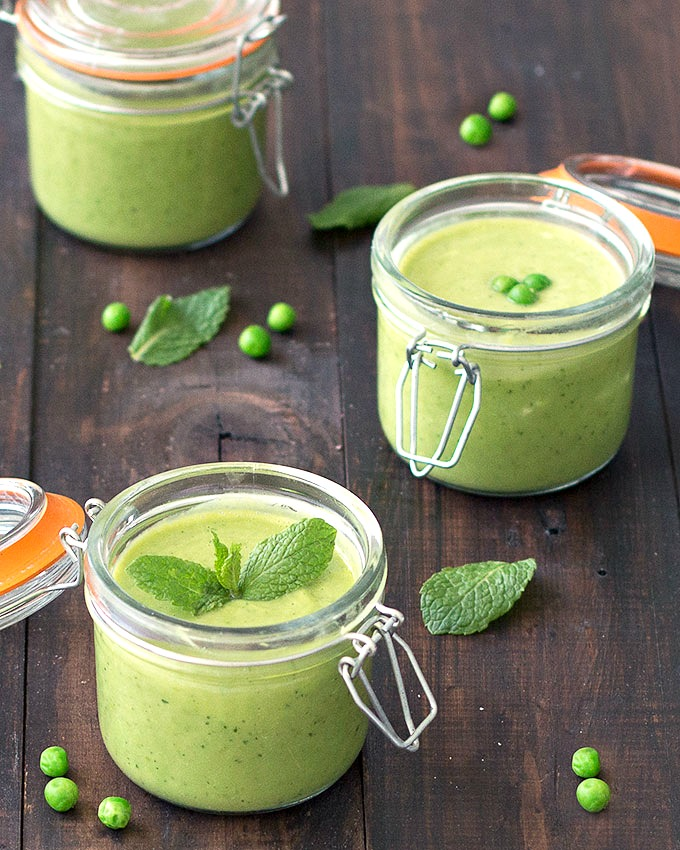
Do peas cause constipation for babies?
No, peas are not known to cause constipation in babies, and they may actually help relieve constipation in babies due to the high fiber content that makes it easier for your baby to pass stools.
Can you use frozen peas for baby food?
Yes, you can definitely use frozen peas in baby food! For this recipe, I added the frozen peas straight into the steamer basket to cook along with the zucchini. You can also freeze the peas once they are cooked and pureed.
How to Make Pea Baby Puree- Bring Water To Boil: Bring a saucepan with a little water to a boil.
- Steam Zucchini: Add chopped zucchini (optional) to a steamer basket, cover, and steam for 5 minutes.
- Steam Peas: Add the peas (fresh or frozen) and steam for another 3-5 minutes.

- Let Cool: Let it cool slightly and reserve the steamer water.
- Transfer to Blender: Transfer the cooked peas and zucchini to the blender or food processor.
- Add Mint: Add in the chopped mint or another spice.
- Puree: Puree until smooth or creamy, adding reserved water if needed to thin out the puree.
- Serve or Freeze.
- Medium Saucepan
- Steamer Basket
- Blender or Food Processor
- Freezer Tray
- Storage Containers for Fridge
- highchair
- suction bowl or baby bowl
- baby spoon
- open lid cup
- bib with catch pocket
While I love the fresh flavor of steamed peas with mint, there are several ways you can cook peas for baby food.
BEABA BabycookDoes anything sound better than a homemade baby food puree with a 15-second hands-on prep and cook time? I didn’t think so. Let me introduce you to the magic of the BEABA Babycook! With the touch of a button, the Babycook will cook and blend the peas into a smooth and creamy baby food puree! It’s like magic. To make, place 2 cups of peas into the stainless steel steamer basket, and place the basket into the glass container, closing the lid. Fill the reservoir tank to a level 3, close and lock the lid. Hit the steam button and let the machine do its magic. Once steamed, transfer the peas into the glass container, leaving the water. Add in a pinch of fresh mint, if using. Close the lid, and hit the blend button for 1 minute or until the puree is smooth.
Let me introduce you to the magic of the BEABA Babycook! With the touch of a button, the Babycook will cook and blend the peas into a smooth and creamy baby food puree! It’s like magic. To make, place 2 cups of peas into the stainless steel steamer basket, and place the basket into the glass container, closing the lid. Fill the reservoir tank to a level 3, close and lock the lid. Hit the steam button and let the machine do its magic. Once steamed, transfer the peas into the glass container, leaving the water. Add in a pinch of fresh mint, if using. Close the lid, and hit the blend button for 1 minute or until the puree is smooth.
Full Review: read my full, in-depth and honest review of the BEABA Babycook Neo here! Make sure to grab 15% off your Babycook with code (BabyFoode15)!
SkilletIn a medium skillet, add 2 cups of frozen peas. Cook over medium heat for 5-7 minutes, stirring often. Puree in a blender as directed below.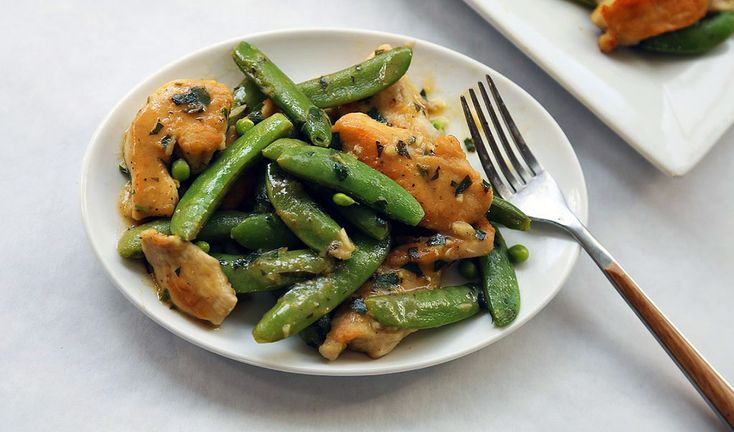
Place 2 cups of peas into a medium saucepan, add enough water to cover the peas, and bring to a boil. Reduce to simmer and cook for 8-10 minutes or until tender. Puree in a blender as directed below. Note that boiling will rid the peas of some nutrients as they are leached into the boiling water, so steaming or using a skillet is preferred. If you need liquid to thin out the puree, use some of the leftover water.
Great Pea Combination PureesWhile this pea puree is delicious and satisfying by itself, it’s also easy to mix and match with other nutrient-dense baby food purees. So give these fun flavor combos a try!
- Apples
- Broccoli
- Bananas
- Pears
- Quinoa Baby Cereal
- Fennel and Peaches
- Green Beans
- Chicken
- Spinach
- Soft Tofu
- Mango
- Yogurt
WeeSprout Silicone Baby Food Freezer Tray
Our favorite freezer storage container for baby food! Made of 100% food-grade silicone and comes with a hard clip-on lid. Large 3oz sections with 2oz markings to make sure you have the right amount for your baby.
Large 3oz sections with 2oz markings to make sure you have the right amount for your baby.
View Product
Adding SpicesWhile the most popular option is adding mint to baby food, you can also add a splash of lemon or lime juice, 1/2 tsp coconut oil, 1 tsp chopped basil, 1 tsp chopped parsley, or 1/4 tsp fresh ginger.
Tip on Spices: I always add spices or herbs to my baby food purees, but you can choose to leave them out in all of your baby food. You do you! Either way, this puree will surely taste amazing.
How to Store Pea Baby FoodRefridgeratorYou can store this puree in an airtight container in the fridge for 3-4 days.
FreezerThis puree can be frozen for up to 4 months.
- Spoon puree into a freezer storage container. Do not overfill.
- Place the lid on the storage container or cover with a piece of saran wrap, and label with the date and recipe name.

- Place the tray into the freezer and let it freeze completely — preferably overnight.
- Pop-out the baby food cubes and place them in a ziplock baggie or stasher bag. Don’t forget to relabel the baggie or stasher bag for future reference.
Need more information on how to store your baby foods? Head over to my Best Baby Food Storage Containers – Plus 6 Tips on Freezing and Thawing post!
Related
15 Stage One Baby Food Purees
Feeding Tips
- Follow your baby’s lead – when feeding purees from a spoon, sometimes there’s a tendency to keep offering bites past the point of your baby being full. Always follow baby’s cues for when they are done eating. Turning away from the spoon, closing her mouth, or pushing food away are all signs that baby is finished with the meal.
- Try adding a little seasoning or spice to purees – babies like flavor! Or consider changing the temperature of purees from time to time, to slightly warmed or slightly chilled.
 Varying these aspects adds to the sensory experience!
Varying these aspects adds to the sensory experience! - Place a small amount of puree on the tray during spoon feeding, so that your baby can dip their fingers or hands in the puree. Allowing baby to explore foods in this way helps them learn to self-feed and can help them be more willing to try new textures and foods in the future.
Or watch a shortened version of this video here.
- 2 cups peas, fresh or frozen
- 1/2 cup zucchini, roughly chopped (optional)
- 4 mint leaves, roughly chopped (optional)
Steam: In a medium saucepan, bring 2″ of water to a boil over medium heat. Place the zucchini in a steamer basket, and place over boiling water.
 Cover and steam for 5 minutes.
Cover and steam for 5 minutes.Add Peas: Add in the peas, and steam for an additional 3-5 minutes. Reserve steamer water. Let cool slightly.
Blend: Add the zucchini, peas and mint leaves to a blender or food processor and puree for 1 minute or until you have achieved the desired texture. If the puree is too thick, add in 1/4 cup of the reserved steamer water until you have the right consistency.
Serve: let cool and serve to your baby or freeze for a later meal.
Age: 4-6 months and up
Yield: 15 ounces
Note on Zucchini: while this is a 2 vegetable starter puree, zucchini allergies are very low, so I added it to this recipe to give the peas a mild taste and smoother texture.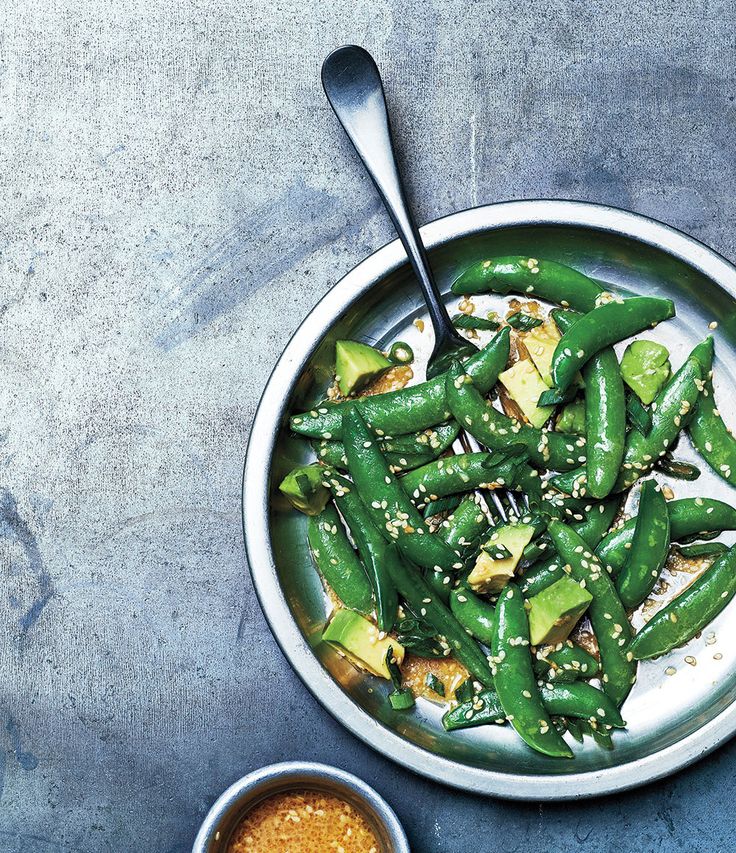 You can completely leave them out if you prefer. Just steam the peas as directed.
You can completely leave them out if you prefer. Just steam the peas as directed.
Additional Spices: instead of the mint, feel free to use a splash of lemon or lime juice, 1/2 tsp coconut oil, 1 tsp chopped basil, 1 tsp chopped parsley or 1/4 tsp fresh ginger.
Storage: Fridge – store in an airtight container in the fridge for up to 4 days. Freezer – can be frozen for up to 4 months.
Blender
Freezer Tray
Saucepan
Tripp Trapp High Chair
Bumkins Baby Bowl
Serving: 1ounce, Calories: 15kcal, Carbohydrates: 2.9g, Protein: 1.1g, Fat: 0.1g, Sodium: 1mg, Potassium: 57mg, Fiber: 1g, Sugar: 1.2g, Calcium: 5mg
Did you make this recipe?
Tag @babyfoode on Instagram and hashtag it #babyfoode!
Pin Recipe Email a Friend
Peas complementary foods - Encyclopedia Baby food
Levchuk Victoria © peas Peas in complementary foods are necessary for a small child. For diversity and health. Strictly speaking, green peas are not a vegetable. It is part of the legume family, it is a plant that produces pods with seeds inside. Lentils, chickpeas, beans, and peanuts are also legumes.
For diversity and health. Strictly speaking, green peas are not a vegetable. It is part of the legume family, it is a plant that produces pods with seeds inside. Lentils, chickpeas, beans, and peanuts are also legumes.
However, green peas are usually cooked and sold as vegetables. You can find it frozen, fresh or canned.
The nutritional value of peas is amazing considering the small size of the peas. Did you know that one cup of peas contains more protein than a tablespoon of peanut butter, as well as calcium, vitamins A and C, and iron. These wonderful little vegetables are a great first green food for a baby as they are both nutritious and delicious.
Types of peas
Contents:
Since childhood I know that peas can be different. There are sweet varieties that are grown for salad or just to eat, and there are varieties that are good to dry and eat in the winter.
Peas are one of the earliest spring ripening crops that can be used in all kinds of culinary dishes.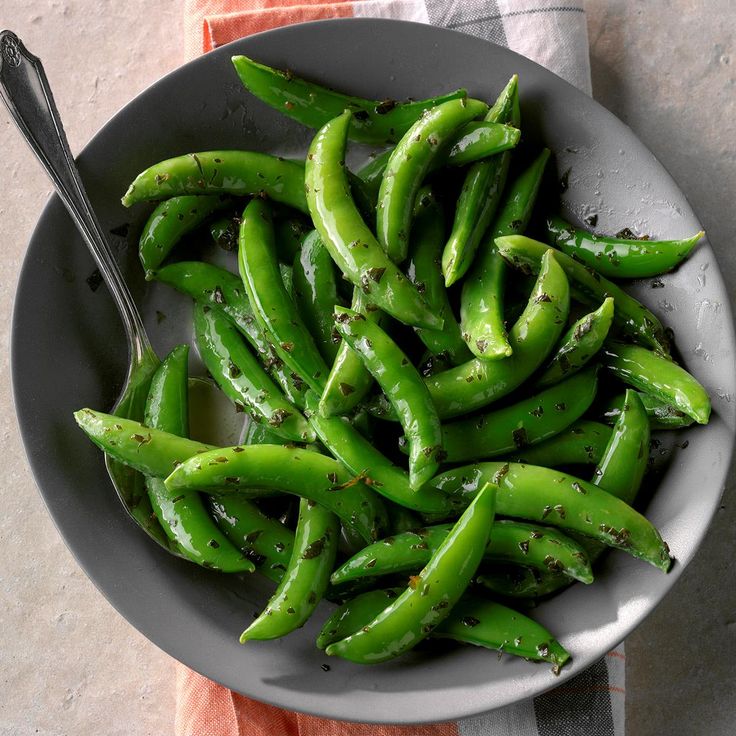
Peas are fairly easy to grow. The hardest part of growing peas is choosing which variety to grow. There are basically three types of peas: sugar, shelling and brain peas. There are also fodder varieties , but we will not discuss them here. Each goes by several names, which makes the choice even more confusing. But it is important for us to know their differences.
Sugar variety is the sweetest and is eaten fresh with the pod.
green peas for childrenPeeling variety is used for conservation, long-term storage, it makes delicious soup in winter. Brain peas are always canned.
Pea season from the beginning of June to July, depends on the strip of Russia. In our south, children can already buy from mid-May.
History of peas
green peas When exactly peas were first discovered remains a mystery, however, there are many assumptions. For example, the first appearance of the pea is thought to have been in Central Asia, especially in Burma and Thailand or Afghanistan, the eastern edge of the Mediterranean basin, and the mountain ranges and plateaus of Ethiopia.
For example, the first appearance of the pea is thought to have been in Central Asia, especially in Burma and Thailand or Afghanistan, the eastern edge of the Mediterranean basin, and the mountain ranges and plateaus of Ethiopia.
Fossilized pea pods found in Switzerland date back to 10,000 years ago. In the 3rd century BC, Theophrastus mentions peas that were sown in the later winter. Pea cultivation is believed to have spread to India, China and Europe in the 2nd millennium BC. Roman legionaries harvested wild peas to supplement their diet in the 1st century BC.
Green Peas Complementary FoodPeas were brought to North America by Christopher Columbus in 1942, where they were quickly adopted by Native Americans. During the Middle Ages, peas were a stable food that kept hunger at bay, and during the early modern era in Europe, unripe fresh peas were prized as a gourmet meal.
Peas became famous in Russia only in the 18th century. It was grown throughout Russia, both in the fields and in the gardens.
Green peas “walked” along the roads of Russia, because they were planted along the roads so that travelers could eat. In Russia, about 200 million cans are canned a year, probably because of the Olivier salad.
Benefits of peas
peas baby foodCompared to vegetables like carrots, peas have higher protein levels. In addition, Pea is a good source of dietary fiber, vitamin A, iron, folate, thiamine, vitamin C and manganese. It also has a high level of vitamin K. One of the health benefits of green peas is blood sugar control.
Peas also contain a unique range of health-promoting phytonutrients. One of these phytonutrients, a polyphenol called coumestrol, has recently come to the fore in research to protect against stomach cancer. A study in Mexico City found that daily consumption of green peas, along with other legumes, reduced the risk of stomach cancer, especially when the daily intake of coumestrol from these legumes was approximately 2 milligrams or more. Since one cup of green peas contains at least 10 milligrams of coumestrol, it will not be difficult for us to get these wonderful health benefits.
Since one cup of green peas contains at least 10 milligrams of coumestrol, it will not be difficult for us to get these wonderful health benefits.
Don't forget the unique phytonutrients in green peas that provide us with key antioxidant and anti-inflammatory properties. Some researchers are now suggesting that the link between consumption of green peas and legumes and a reduced risk of type 2 diabetes may be due not only to the relatively low glycemic index of green peas (around 45-50), fiber or protein in the composition, but also to unusual combination of antioxidants and anti-inflammatory phytonutrients.
minerals and vitamins peas
peas for children Green peas stand out as an organic food. Agricultural research has shown that planting peas can provide important benefits to the soil. First, peas belong to a category of crops called "nitrogen-fixing" crops. With the help of bacteria in the soil, peas and other crops can extract nitrogen gas from the air and convert it into more complex and usable forms. This process increases the nitrogen content of the soil without the need to add fertilizer. Peas also have a relatively shallow root system that can help prevent soil erosion, and once the peas are harvested, plant debris tends to break down relatively easily to enrich the soil. Finally, crop rotation of peas with other crops has been shown to reduce the risk of pest problems.
This process increases the nitrogen content of the soil without the need to add fertilizer. Peas also have a relatively shallow root system that can help prevent soil erosion, and once the peas are harvested, plant debris tends to break down relatively easily to enrich the soil. Finally, crop rotation of peas with other crops has been shown to reduce the risk of pest problems.
Although Green Peas are extremely low fat foods (approximately one-third of a gram of fat per cup), the type of fat and fat-soluble nutrients they contain is impressive. Recent studies have shown that green peas are a reliable source of omega-3 fats in the form of alpha-linolenic acid (ALA).
One cup of green peas contains approximately 30 mg of ALA. About 130 mg of the essential omega-6 fatty acid, linoleic acid, can also be found in a cup of green peas. This very low but high-quality fat content helps us get important fat-soluble nutrients from this legume, including significant amounts of beta-carotene and small but valuable amounts of vitamin E.
So let's not neglect green peas in summer and dry peas in winter. In the diet of children, this is a very useful product.
peas for childrenGreen peas cannot be a first food because they cause discomfort and gas. Russian pediatricians advise introducing green peas to children after 10-12 months, and American pediatricians - after 8 months.
Beans should not be given more than 2 times a week.
Dishes from mature peas can only be given after 2 years of age in soups. Canned peas can be given after 3 years. A portion of the first complementary foods is not more than 30-50 grams, if the child has digestive problems, then let the portion be smaller so that the body gets used to it faster.
Children under 2-3 years old can eat green peas up to 80 grams. Mature grains are given in an amount of not more than 100 grams after 3 years.
Fresh peas can be offered from 2-2.5 years old, only young sweet varieties.
Green peas are considered a hypoallergenic product, so they can be safely given to a child.
green peas complementary foods
pea pureeThere is an opinion of doctors that it is better to give green peas up to 12 months so that the body learns to digest it, because it will be more difficult to do it later.
The first feeding with green peas comes in the form of mashed potatoes, which are boiled until cooked and rubbed through a sieve, so it is better absorbed.
Ruth Yaron's Super Nutrition for Your Baby states that whole green peas are dangerous for children under three years of age and should be given mashed, ie. crush with a regular fork. I usually just crush them with my fingers before giving them to a child. But we eat it instead of popcorn, so this way, I peel off the green shell, squeeze it with my fingers and give it, this is enough for a two-year-old child so that he does not choke.
Pea soup with smoked meats is best introduced to a child at the age of 5.
peas complementary food
Allergy to green peas and peas
pea soupPeas come in several varieties, but green and yellow peas are the most commonly consumed. Pea allergy exists but is not very common. In most cases, pea allergies in children are due to cross-reactivity between peas and other legumes. It is also important to cancel that green peas are considered hypoallergenic , but mature peas are already included in the middle group of allergenic products .
Children may be allergic to peas, especially if they have had an allergic reaction to other legumes. Legumes is a family of products that includes peas, chickpeas, peanuts, beans and lentils, etc.
There is a high degree of cross-reactivity between lentils, chickpeas and peas. In addition, pea allergy can also occur due to IgE-mediated (antibody-mediated) cross-reactivity between peas and peanuts.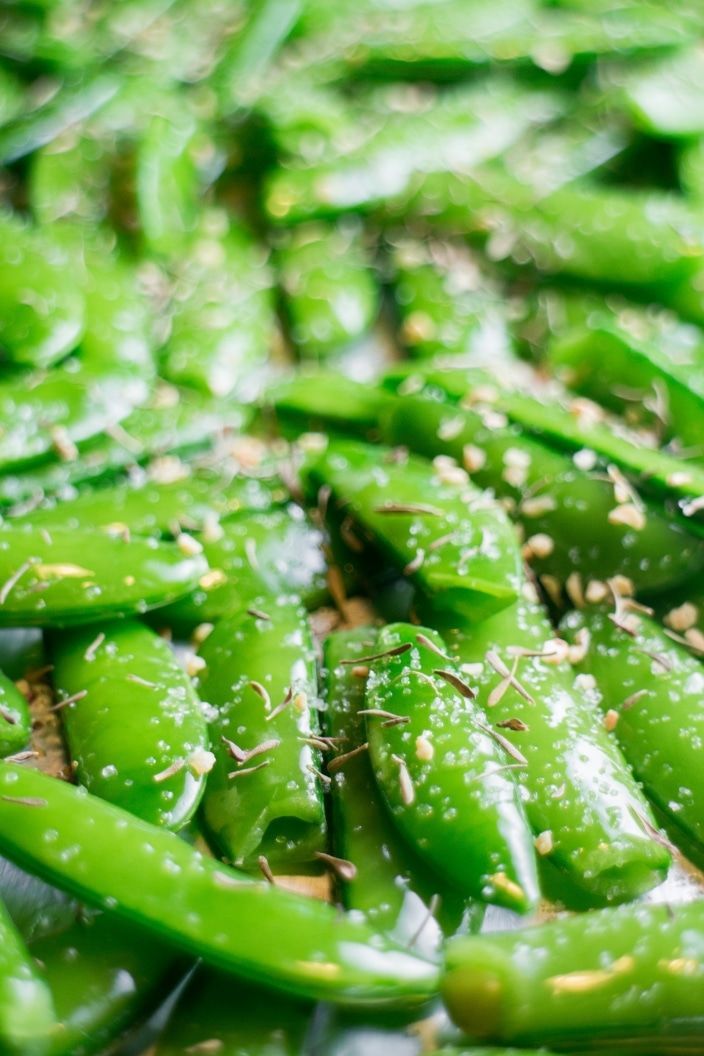
A child's body can react to such allergens in peas as isoflavone reductase, globulin, glutelin, vikilin, vivilin. And most importantly, these allergens are resistant to heat and chemical treatment.
Cases of reactions to the inhalation of vapors from cooking peas have been observed. Cases of allergies to boiled peas have also been reported, but no allergies to green peas have been found in these patients.
There is a chance for a child to become allergic to peas over a period of time, especially if the portion is too large. But before giving peas to a child, it is recommended to consult a doctor and always adhere to the 4-7 day waiting rule when peas are introduced into complementary foods or any other food in the diet. It is better to give less than more.
Pea allergy symptoms vary among children. Some symptoms may be mild, while others may be severe. Mild symptoms include rashes, hives, itching in the mouth, throat, lips or entire face, stomach cramps, vomiting and coughing, etc.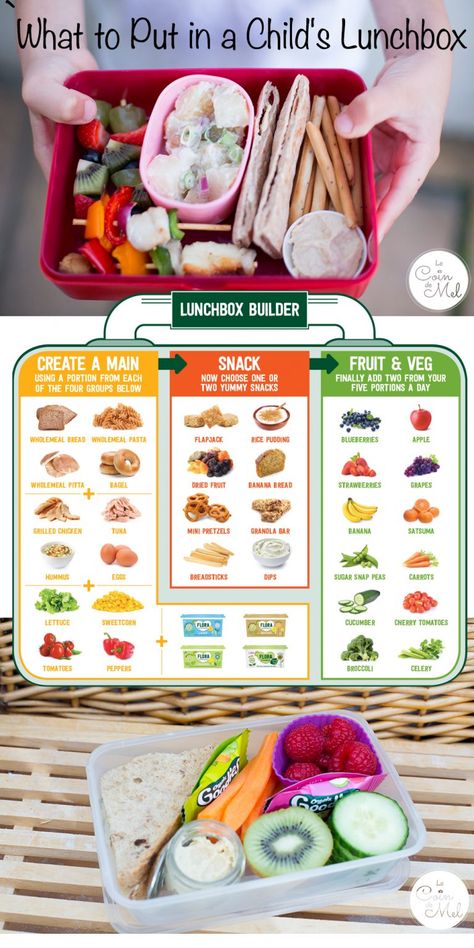
Severe symptoms include shortness of breath, shortness of breath and rapid heart rate, anaphylactic shock which can cause choking and severe breathing difficulties.
It is best to seek medical attention regardless of mild or severe allergy symptoms. Timely action will help to avoid complications, as well as help in diagnosis and treatment.
How to give green peas to children?
For the first feeding green peas should be boiled in clean water. Beat with a blender and give in the form of pea puree. Babies love bright green puree because of its sweet taste and smooth texture. Depending on how much your child eats, you can store the puree in small bags, ice cube trays, or in a zip-lock freezer bag. Up to 2 years, it is better to give the child only in the form of baby puree. Either neat or mixed with other vegetables.
Why love pea puree?
green peas for children- Versatility: Ideal as a first bean puree for children and as an addition to a range of dishes.
 It is worth trying to serve peas with fish, seafood, chicken or use as a sauce.
It is worth trying to serve peas with fish, seafood, chicken or use as a sauce. - A sensory explosion: pea puree hits all the senses, from delicious taste, fresh aroma to bright green color.
- Quick and easy to prepare : Prepare a gentle puree in less than ten minutes.
- Available all year round : Using frozen peas means the family can enjoy this puree no matter the season.
- Freezing : frozen peas are ideal, either pureed or as peas.
How to select and store peas
Only about 5% of grown peas are sold fresh. The rest are either frozen, or canned, or dry.
green peas for children When purchasing fresh green peas , we are looking for strong pods, velvety and smooth. Their color should be a lively medium green. Those whose green color is particularly light or dark, or yellow, whitish or mottled grey, should be avoided. Also, don't choose pods that are swollen, soaked in water, or have mold residue. The pods should contain peas of sufficient quantity and size so that they do not have a lot of empty space. It is enough to shake the pod to understand whether it is empty or full. All varieties of fresh peas should be stored in the refrigerator, as the heat will speed up the formation of sugar in the starch.
The pods should contain peas of sufficient quantity and size so that they do not have a lot of empty space. It is enough to shake the pod to understand whether it is empty or full. All varieties of fresh peas should be stored in the refrigerator, as the heat will speed up the formation of sugar in the starch.
Unwashed peas stored in the refrigerator in a bag or unsealed container will keep for several days. Peas are not stored in a pod for a long time, so if you bought a lot, then it is better to peel them and store green peas separately in the refrigerator for up to 5 days or in the freezer for up to 6-12 months.
green peas complementary foodsUnlike round pea pods, sweet pea pods are flat. Choose the smaller size as they tend to be sweeter.
To check the quality of peas, just open one of them and make sure that it is fresh. They should be bright green in color, firm and plump.
Dry peas must be stored in a dry, dark place, preferably in glass.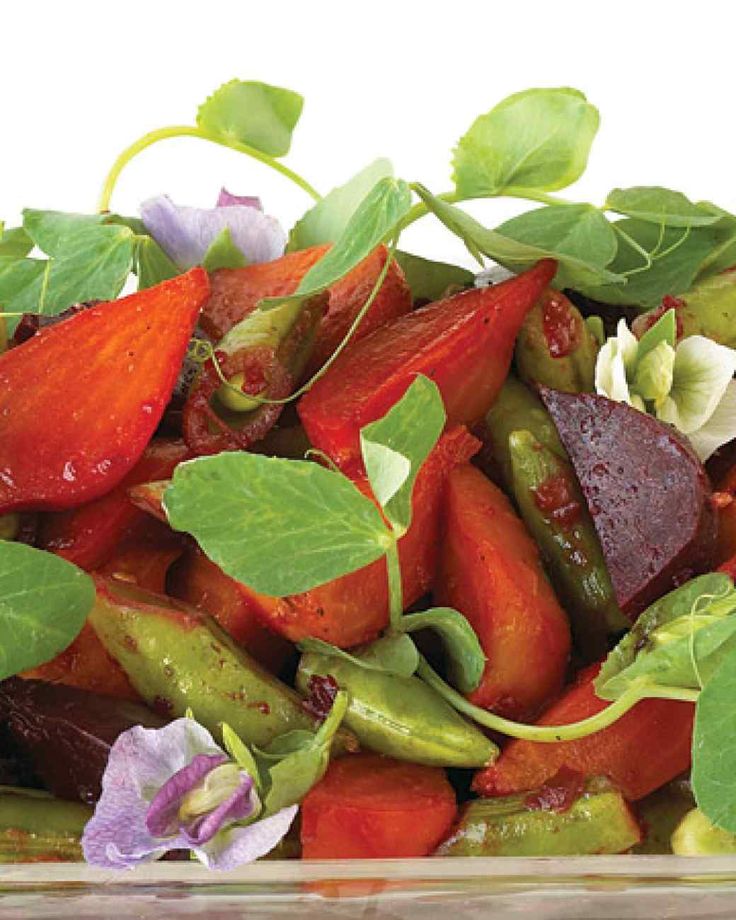 If peas are bought by weight, then we look at the peas themselves so that they are the same color, dry, without mold and dampness, without pests. You can store about 12-24 months, depending on the variety of peas.
If peas are bought by weight, then we look at the peas themselves so that they are the same color, dry, without mold and dampness, without pests. You can store about 12-24 months, depending on the variety of peas.
Pesticides and peas
Peas in Russia are classified as products with a low pesticide index, apparently because they are relatively easy to grow in any of our territories, they are not whimsical, there is water and sun, they will be happy.
But in 2019, Rospotrebnadzor identified a pesticide, the herbicide 2,4-D acid, in the Mistral brand of peas. Hope they fixed it.
Of course, it is better for children to buy an organic product that is grown without pesticides and nitrates.
complementary food peas
Contraindications
Peas are a difficult product to digest, which complicates the work of the child's gastrointestinal tract. Therefore, if children suffer from colitis or enteritis, then you should refrain from the early introduction of peas into complementary foods and consult a doctor. Also, peas can increase gas formation, which will lead to abdominal pain. With frequent diarrhea or constipation, it is also not advisable to give peas in large portions. Green peas are not recommended for kidney disease. Boiled peas also contribute to an increase in uric acid in the body and the accumulation of salts. You can not this product with diseases such as cholecystitis, nephritis, kidney stones, increased blood clotting, gout and any intestinal diseases.
Also, peas can increase gas formation, which will lead to abdominal pain. With frequent diarrhea or constipation, it is also not advisable to give peas in large portions. Green peas are not recommended for kidney disease. Boiled peas also contribute to an increase in uric acid in the body and the accumulation of salts. You can not this product with diseases such as cholecystitis, nephritis, kidney stones, increased blood clotting, gout and any intestinal diseases.
Suggested way of consumption
Pea and rice brothSteaming or roasting green peas is an easy and healthy way to prepare this vegetable. Throwing peas in ice water after cooking makes for an even smoother puree for your baby! Peas are sweet and delicious, and can be added to children's meals for a nutritional boost.
Up to 1 year, green peas can only be boiled or baked in the oven, and then made into baby puree. After a year, you can cook soups or add 1/3 of green peas to mashed potatoes, you get an interesting color and taste.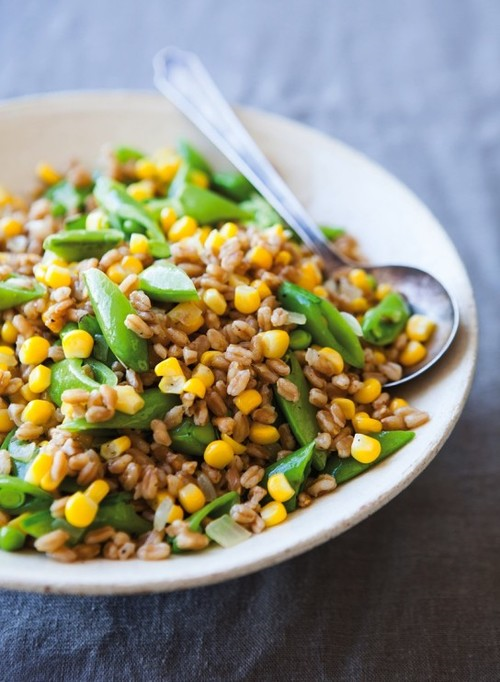
The most common cooking method is traditional, when used in combination with vegetables or potatoes. Boiled peas are also often used in salads or with rice. A well-known option is cooking green peas with meat stewing method . Another alternative would be Pea Soup or Delicious Vegetable Puree. In Russia, you can also find pies with peas, pate, pancakes, cutlets, cereals, etc.
My favorite recipe for baby puree is to mix peas and other vegetables in a 1:3 ratio, about 1/3 of a pea. And add the fried onions before beating until smooth. It turns out tasty and satisfying.
Freezing peas
Peas are ideal for freezing. It does not lose taste, texture and smell. What more could you ask for? It can be frozen as green peas or boiled as a soup dressing. I already wrote about pea soup with bacon, how I freeze it in the form of a soup base.
Children's green peas are easy to freeze. In season, green sweet peas are bought, which get rid of the pod, and the peas are washed, dried, and then frozen in special bags. About 600 grams of green peas are enough for me for the winter. I cook soups with it, I make Olivier. Honestly, I stopped buying canned peas. Boiled and put in a salad, more benefits. You can store frozen peas for about 6-12 months. Moreover, it behaves perfectly, ice rarely forms on it, especially if it is frozen correctly.
In season, green sweet peas are bought, which get rid of the pod, and the peas are washed, dried, and then frozen in special bags. About 600 grams of green peas are enough for me for the winter. I cook soups with it, I make Olivier. Honestly, I stopped buying canned peas. Boiled and put in a salad, more benefits. You can store frozen peas for about 6-12 months. Moreover, it behaves perfectly, ice rarely forms on it, especially if it is frozen correctly.
Someone likes to blanch peas for 1-2 minutes, the shelf life is longer, but I don’t have it for more than 6-8 months.
In general, I recommend frozen over canned peas and acknowledge the benefits of fresh over frozen. Therefore, it is possible to buy fresh green peas, then we buy it, there is no way, we take frozen.
Why is it better to freeze it yourself in summer? But because the stores already sell old green peas. It is not as tender, it is suitable for soups, but not for baby food or salad. Therefore, in the summer I myself choose green peas, I am engaged in separation and freezing.
How to prepare green peas for children?
canned peasRemove green peas from their pod, rinse under running water.
Steam: Put the peas in the slow cooker or steamer and cook for about 5-10 minutes, depending on the variety of peas.
Boil: Put the peas in boiling water, cook over high heat until tender, about 15-20 minutes. Depends on the youth of the peas, the younger, the less time is needed for cooking. Ready peas are tender, it is important that the shell should not burst.
Bake: Peas are baked in the oven for about 30-40 minutes, you can add a little butter for a nice taste.
After cooking the green peas, hold them under cold running water for about 3 minutes to make the puree more tender.
Preparing puree: Put the cooked boiled peas in a blender and blend until smooth. You can add liquids or breast milk. For children 10-12 months old, you can additionally pass pea puree through a plastic sieve.
How to prepare ripe peas for children?
cook peasMature peas must be soaked before cooking. Ideal for the night, but can be for a couple of hours. Soaking reduces the cooking time by 20-40 minutes. Then you can simply boil in water, the cooking time is up to 2 hours, depending on the degree of splitting of peas.
But I cook all legumes differently. On my site I have already written about this method, but I will repeat.
I throw soaked peas into boiling water. I put in 2 times more water. For about 1 cup of peas, 2 cups of water. And then I cook it for 5 minutes. I usually do this in the morning or at night. To forget about peas for a few hours. After 5 minutes of simmering or boiling, I wrap the pot in something warm and forget about it. Usually about 4 hours of slow cooling is enough for the peas to reach readiness. Very convenient way, economical in terms of electricity.
Finger food and green peas
Green pea puree Only green peas are suitable for finger food (simply because they are tastier and brighter).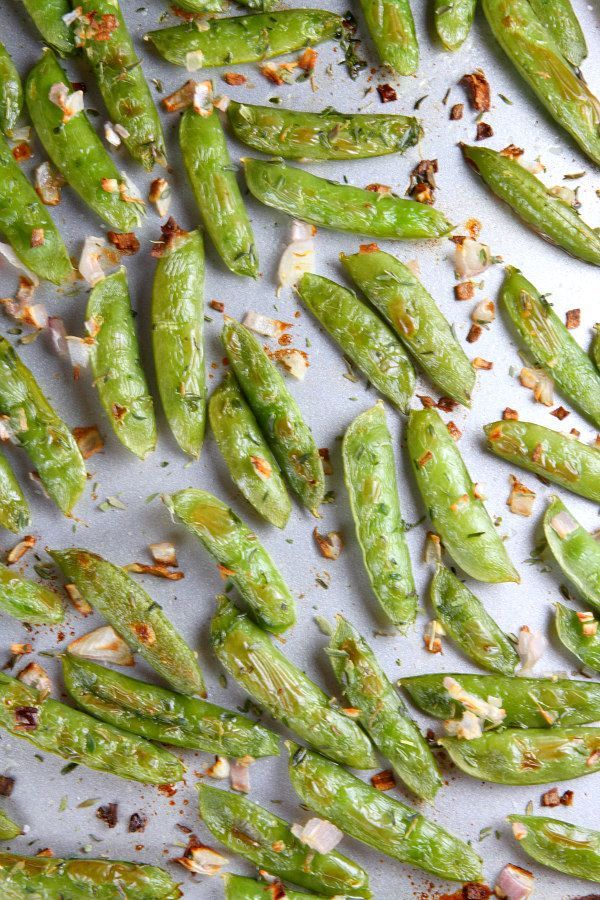 It is most often chosen by mothers for tweezing. It is ideal to take peas with your fingers and send them to your mouth. Up to 2-2.5 years, it is better to take boiled green peas of sweet varieties, after which you can take fresh ones.
It is most often chosen by mothers for tweezing. It is ideal to take peas with your fingers and send them to your mouth. Up to 2-2.5 years, it is better to take boiled green peas of sweet varieties, after which you can take fresh ones.
In principle, many doctors are sure that after 12 months it is already difficult to choke on a small pea, but they still advise crushing them with a fork, in order to avoid various situations with suffocation. We also crush fresh peas for the first time.
It is also important to know that if a child swallows a whole pea, then its size allows you to go out naturally in a few days.
Ready-made baby food from peas
Soup from peas Mostly green peas are found in ready-made baby food, but peas can also be found in multicomponent purees. In its pure form, puree was discontinued. On the websites of baby food manufacturers, green peas are not presented in the line of one-component purees. Previously, he was at Grandma's Lukoshka, Hipp, Gerber.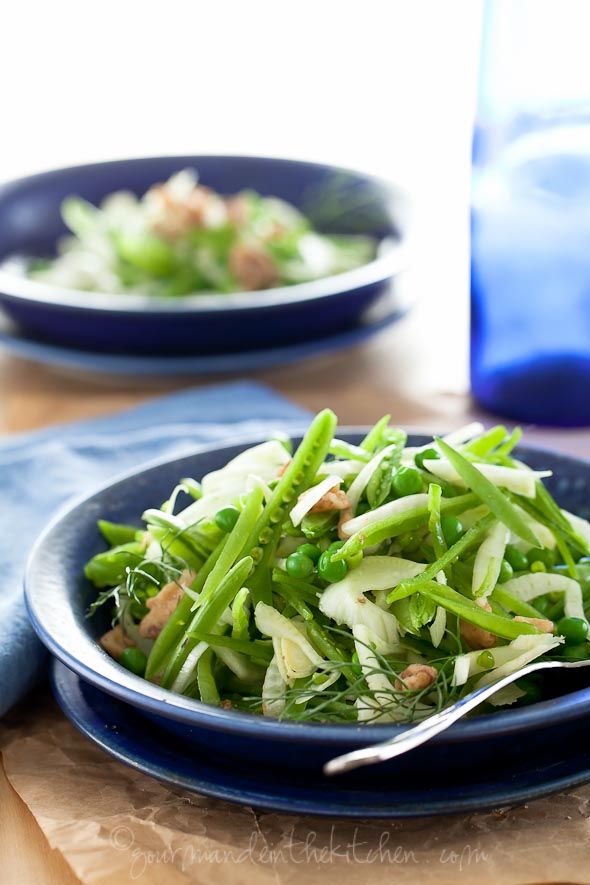
gerber
- Puree green peas-Brookoli-Kabachki, from 6 months, 125 grams
- Puree vegetables with pieces of beef with 12 months 190 grams
- 4 - soup with chicken, from 7 months 190 g
- Assorted vegetable puree from 7 months 125 g
- Vegetable puree-noodles-chicken from 1 year 220 g (peas)
hipp
Sempler
- from 12 months 190 gram
- Puree vegetables with beef meatballs, from 9 months 190 gram
- Sauteed vegetables with sea bass from 12 months 190 gram
- Puree potato-vegetable-chicken ragout from 12 months 190 gram
Foods that go well with peas:
green pea soup- carrots,
- cauliflower,
- potatoes,
On our site Encyclopedia Baby Food there is useful information on the nutrition of your children, which is useful for everyone, and we update the site "Encyclopedia Baby Food" constantly and try to search and write only excellent, verified and necessary information for you and your children.

Disclaimer No. 1: It must be understood that the author of the articles on the Baby Food Encyclopedia website is not a medical staff, “I am not a doctor.” The information I share is based on my own experience. My goal is not to teach you how to eat or feed your child, but to talk about how we did it, what new things I learned or read. This expands the picture of Baby Food knowledge, gives you a glimpse of the whole process so you can decide if you like it or not.
Disclaimer No. 2 : However, the above does not cancel visiting a pediatrician. Before you start complementary foods, you need to get his professional opinion on the best way to introduce new foods for your baby. I also draw your attention to the fact that you need to look at the original date of the published articles, because some of the "best practices" may have changed. Always check with your child's pediatrician about complementary foods and their health.
Disclaimer #3: Keep in mind that every family is unique, every situation is also completely unique.
 There are no universal solutions. Only you can find what works best for you. Certain goals require certain sacrifices and priorities - not everyone wants to make those choices, and that's GREAT! Just know what you want to achieve, and be ready to get to work, putting the best of your strength!
There are no universal solutions. Only you can find what works best for you. Certain goals require certain sacrifices and priorities - not everyone wants to make those choices, and that's GREAT! Just know what you want to achieve, and be ready to get to work, putting the best of your strength! Disclaimer No. 4: On the Encyclopedia Baby Food website, photos from books on baby food with attribution are used for a more complete understanding of the information (Article 1274, Clause 1, Part Four of the Civil Code of the Russian Federation). Literature on baby food is found in the public domain on the Internet.
Apricot puree with chicken
Banan-global puree
Banana puree
borsch
Bouhesica brush with peas and rice
Botterbrod with kolrabi
Rapid dessert
sin. Buckwheat porridge with apricots
Buckwheat porridge with banana
Buckwheat pilaf
Children's sausage
Children's milk porridge with banana
Children's vinaigrette
Children's ketchup
Children's cucumber salad
Children's salad Olivier
Children's porridge biscuits
Children's puree of strawberries, bananas, yellow cherries, yoghurt and biscuits with cereals
Children's puree with cottage cheese and fruits
Homemade yeast bread with flax flour
Homemade cheese
Homemade pizza
2 Breakfast outside Kohlrabi appetizer
Roasted cauliflower
Roasted carrots
Roasted carrots and cherries with millet
Winter salad with Jerusalem artichoke
Cabbage with white beans
Cabbage salad like in a canteen
Mashed potatoes
Quinoa and pumpkin porridge
Quinoa porridge
Breakfast cereals
Quinoa and apple
Strawberry puree
Strawberry puree with banana
Strawberry compote
Wild apple and raspberry compote
Thermo-steamed dried fruit compote for children 8 months
Corn porridge
Corn porridge with pear
Corn porridge with pumpkin
Corn porridge with pumpkin and carrots
Corn porridge with apple and carrots
Chicken liver in the oven
Chicken cutlets with carrots
Chicken with carrots, sweet peppers and potatoes
Pasta navy
Macaroni with orange sauce
Muffins with vegetables and eggs
Baby potatoes in their skins
Milk vermicelli soup
Carrot-potato puree3 Carrots 9042
Carrots with chicken
Fly agaric from eggs and tomatoes
Meat envelopes
Homemade Tarragon drink for children
Cauliflower and carrot vegetable puree
Vegetable soup with maize semolina
Vegetable soup with cheese and corn semolina
Vegetable soup with spinach
Vegetable puree soup with bell pepper
Oatmeal porridge
Pollack fritters
Hot kefir fritters
Omelet in a bag
Omelet with broccoli and cauliflower cheese
Omelette pancake
Peach puree
Baked apples 7 months +
Zucchini and carrot pie
Zucchini pie
Rice and zucchini pie
Fish pie
Fish and potato pie
White cabbage pizza
Lavash pizza
Zucchini, tomato and sausage pizza
Tomato and olive pizza
Spinach pizza
Rabbit pilaf
Chicken pilaf with green peas and corn
Banana and sweet cherry puree
, cottage cheese and cereals 4 cereals
Broccoli (cauliflower) puree
Broccoli, courgette and cauliflower puree
Blueberry puree
Pear puree
Pear and banana puree
Pear and banana puree, baked
Pear and pumpkin puree 7 months +
Pear, pumpkin and peach puree
Pear, apple, plum and prunes puree
Blackberry puree
Turkey puree
Zucchini puree
Zucchini and broccoli puree 904 carrot and potato puree
Quinoa and banana puree
Quinoa and carrot puree
Quinoa, banana and carrot puree
Quinoa, courgette and carrot puree
Quinoa, peach and raspberry puree
Quinoa, cauliflower, apple, pea puree and mint
Quinoa, apple, pear and raisin puree
Quinoa, apple, carrot puree
Rabbit, broccoli and cauliflower puree
Chicken, carrot, potato, apple and pea puree
Raspberry, cherry and banana puree
carrots
Carrot and apple puree
Carrot, potato, broccoli puree with cheese
Carrot, potato, apple and quinoa puree
Carrot, pumpkin, apple and prunes puree
Carrot, apple and potato puree
Turnip and carrots
Plum puree
Cottage cheese, strawberry and banana puree
Pumpkin puree
Pumpkin and banana puree
Pumpkin and squash puree
Pumpkin and apple puree
Pumpkin, apple and banana puree
Cauliflower and broccoli puree
Cauliflower and broccoli puree and potatoes
Cauliflower and rice puree
Cauliflower and apple puree
Cauliflower, green peas and squash puree
Cauliflower, turkey and potato puree
Cauliflower, potato and squash puree
Cauliflower, Carrot and Broccoli Puree
Cauliflower, Carrot, Cheese and Rice Puree
Cauliflower, Apple and Squash Puree
Zucchini Puree
Zucchini and Potato Puree
Zucchini, Carrot and Apple Puree 90 cherries
Blueberry puree
Prune puree
Apple, pumpkin, carrot and some curry puree
Apple and pear puree
Apple and strawberry puree
Apple, strawberry and cherry puree
Apple, peach and banana puree
Carrot and pumpkin puree
Cottage cheese and banana puree
Turkey, potato and carrot stew
Zucchini, carrot and broccoli stew
Fish, potato, carrot and broccoli stew
Rice porridge
Whole grain rice porridge
carrot
Rice porridge with pumpkin
Rice porridge with apples
Rice porridge with apple and pear
Rice porridge with apple and pumpkin
Fish cakes with vegetables
Semi-cooked fish
Fish meatballs with ketchup
Baby Fish Soup
Salmon and Celery Fish Soup
Carrot and Kohlrabi Salad
Chickpea Salad
Chickpea and Cabbage Salad
The Laziest Soup
Creamy Kohlrabi Soup
Oatmeal Smoothie3 Sauce Cheesy Pizza
Pea and Bacon Soup
Baked Vegetable Soup
Kohlrabi Soup
Salmon Soup
Cauliflower Soup
Turnip Potato Soup
Meatball Soup for the Picky Eater
Green apple kohlrabi soup
Rabbit, pumpkin, potato, broccoli and cauliflower soup
Beetroot soup
Pumpkin mushroom soup
Broccoli and celery soup
Soup/stew Pork with Potatoes and Carrots
Cheburek Chebureks
Pumpkin Cheese Sauce (Annabelle Carmel Recipe)
Buzz Lightyear Sandwich
Pumpkin Apple Puree
Pumpkin Apple Juice
Pumpkin Cake
Pumpkin Soup 9 Puree
Fruit Salad3 Bread lavash
Cauliflower with cheese
Linden and thyme tea
Experimental noodle soup with lentils
Apple puree
Apple juice
What to cook with legumes for children: recipes
Legumes in the baby's diet will become a source of vegetable protein, which is so necessary for the harmonious development of the child - physical and psycho-emotional.
 Dishes based on peas, beans, lentils and soybeans will certainly please the baby. But do not rush to introduce them into the children's menu - pediatricians recommend following certain rules so that "heavy" foods do not harm the crumbs' digestive system.
Dishes based on peas, beans, lentils and soybeans will certainly please the baby. But do not rush to introduce them into the children's menu - pediatricians recommend following certain rules so that "heavy" foods do not harm the crumbs' digestive system. Legumes in baby food: health benefits
Of all plant foods, legumes deservedly occupy a leading position in terms of the content of vegetable protein - a nutrient that a growing body needs so much. Proteins contain essential amino acids that promote the absorption of minerals and are involved in metabolic processes - they can only be ingested with food. Of course, vegetable proteins in baby food will not replace animals, but they must be present on the menu.
Legumes also have a high nutritional value - the complex carbohydrates contained in the products provide a long feeling of satiety. And the good thing is that they are not stored in fats - carbohydrates are converted into "clean energy".
Legumes in the baby's diet will become a source of B vitamins - elements necessary for the "stable" functioning of the nervous system, the development of connective and muscle tissues.

There are many minerals in peas, beans and lentils - iron, calcium, manganese. These elements benefit the growing body - strengthen bones and hair, participate in hematopoiesis.
What legumes should I give my child?
To diversify baby food and make the baby’s menu even more useful, you can introduce the following products related to legumes into his diet:
- Peas
Many children love fresh green peas - they are easy to chew and taste good. The product, which has undergone proper heat treatment, is well digested by the baby's body, does not cause bloating and flatulence. Fresh peas contain vitamins A and C, folic acid, iron, manganese, phosphorus and calcium - a valuable product in the diet of crumbs. It has a slight diuretic effect, will be useful for gastritis and anemia. Only green pea pods should not be given to children under 3 years old - they are poorly absorbed by the baby's digestive system. This also applies to dried peas - in order for them to become suitable food for a child, they need to be boiled for a long time and ground to a puree-like consistency.
 Canned peas can also be added to the baby's menu. But do not forget that the product loses some of its useful properties during the cooking process.
Canned peas can also be added to the baby's menu. But do not forget that the product loses some of its useful properties during the cooking process. - Beans
You can add both dry beans and green beans to the children's menu. In terms of copper and zinc content, it surpasses many vegetables. Another quality of beans is especially valuable - even after heat treatment, it retains up to 70% of nutrients. The product is often included in the medical nutrition of patients with diabetes and gastritis with low acidity.
- Lentils
Of all legumes, lentils hold the record for the amount of folic acid in the composition - it is enough to eat a small handful of the product to replenish the daily intake of the vitamin. The product activates the metabolism in the child's body and helps to strengthen the immune system. Lentils cook much faster than the same beans and dried peas - after soaking it overnight, after 30 minutes of cooking it will be ready.
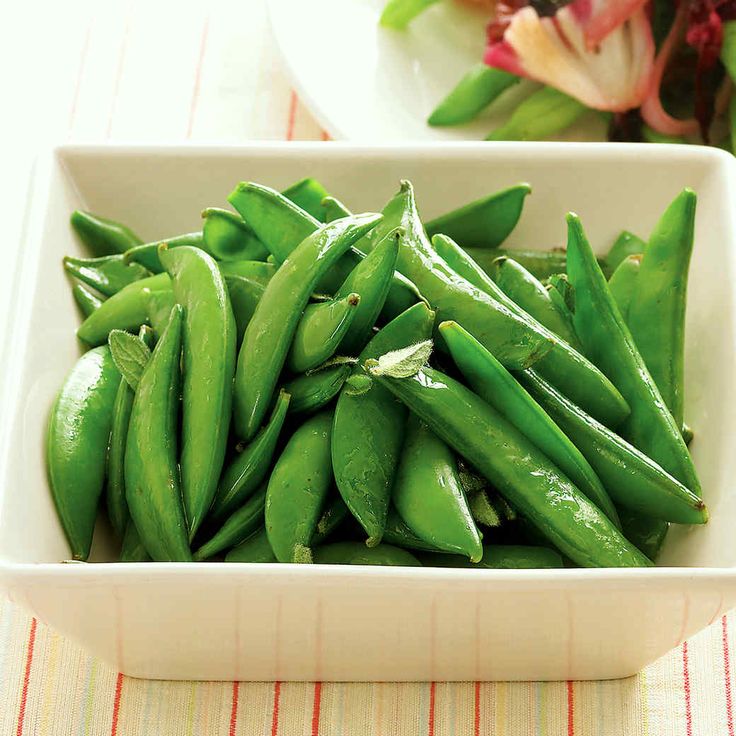
- Soya
Soy is less likely than other legumes to cause allergies. But do not rush to introduce it too early into the baby's diet - the product contains substances that prevent the absorption of proteins and slow down the absorption of calcium by the body. But if you follow the “dosages” and cook soy correctly, it will also bring benefits - cleansing the intestines of toxins, strengthening bones and muscles, improving mental activity, strengthening immunity. Pediatricians often recommend switching babies with lactose intolerance and diabetes to soy-based infant formula.
When and how to introduce legumes into a child's diet?
Pediatricians advise not to rush into the introduction of legumes into the baby's diet. The weak digestive system of a child may not be ready for such "heavy" foods - they contain a group of carbohydrates that are poorly absorbed by the child's body. Flatulence, constipation, increased gas formation - these are the unpleasant consequences that can be expected if you start giving your child too early peas, beans or lentils.
 In addition, legumes often cause food allergies. Even soy, which is considered a hypoallergenic product, is no exception - some children react badly to it.
In addition, legumes often cause food allergies. Even soy, which is considered a hypoallergenic product, is no exception - some children react badly to it. Legumes are introduced into baby food from fresh peas when the baby is 8-10 months old. The first dish will be pea puree - add 100 g of peas to a glass of boiling water, cook for 15 minutes over low heat, drain the broth, chop the peas in a blender, adding a little boiled water. Let your child try half a teaspoon of the prepared puree first. Every 3 days, if the baby’s body “accepted” the new product well, you can increase the amount of complementary foods by 5 g. The maximum dose of fresh pea puree for a baby up to 1.5 years old is 30-50 g at a time.
The rest of the legumes in the diet of a small child enter only from 1.5 years. Add to the baby's menu if he is not allergic to the product, beans and lentils. The maximum daily dose of legumes for children 1.5-3 years old is 70-100 g at a time. Pediatricians do not recommend giving your baby legume-based dishes more than once every 3 days.
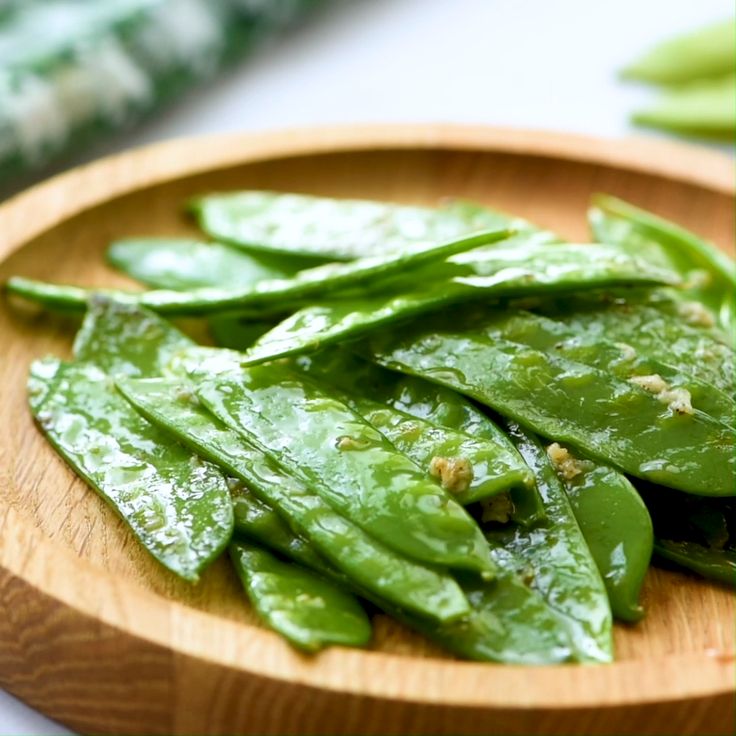 And this is even if the child's body accepts the product well.
And this is even if the child's body accepts the product well. Healthy eating: what dishes can be offered to a child?
In order for legumes in the baby’s diet to bring only health benefits, mothers should follow certain rules during their heat treatment. Dry beans or peas should be soaked a couple of hours before cooking. The product should be put only in boiling water and boiled over high heat - do not cover the pan with a lid. If you are preparing a dish with vegetables, add them closer to the end of cooking. Salt the beans and peas a couple of minutes before they are done. Cooking time for legumes will depend on the specific product - be sure to read the manufacturer's recommendations on the package.
In the diet of a child, there may be such dishes based on legumes:
- Green Pea Soup - from 1.5 years old
You will need the following ingredients - 2 potatoes, 1 carrot, 1 tbsp green peas, 2 tbsp. l low-fat sour cream, a bunch of fresh parsley, salt to taste.
 Peel the carrots and potatoes and cut into cubes, throw in 1-2 liters of boiling water, cook a little over high heat. Add green peas, reduce heat and simmer until tender. Remove the soup from the stove, cool a little, add sour cream and finely chopped parsley, beat in a blender.
Peel the carrots and potatoes and cut into cubes, throw in 1-2 liters of boiling water, cook a little over high heat. Add green peas, reduce heat and simmer until tender. Remove the soup from the stove, cool a little, add sour cream and finely chopped parsley, beat in a blender. - Omelet with green beans - from 3 years old
Boil 0.5 tbsp of young green beans until tender. Beat 1-2 eggs with 1 tsp flour, 2 tbsp. l milk. Heat a frying pan greased with olive oil, put the beans on it, and then the scrambled eggs. Cook the dish under the lid.
- Bean pate - from 3 years old
To prepare the pate, take 2 tbsp. l cooked beans. Grind it with pre-fried onions (1 tsp). add 1 tsp of olive oil, 0.5 tsp of lemon juice to the dish. Serve the pate with whole grain bread.
- Bean soup with vegetables - from 3 years old
Boil until tender 50 g of white beans. Wash and finely chop the vegetables - 1 potato, half an onion, 1 carrot.












